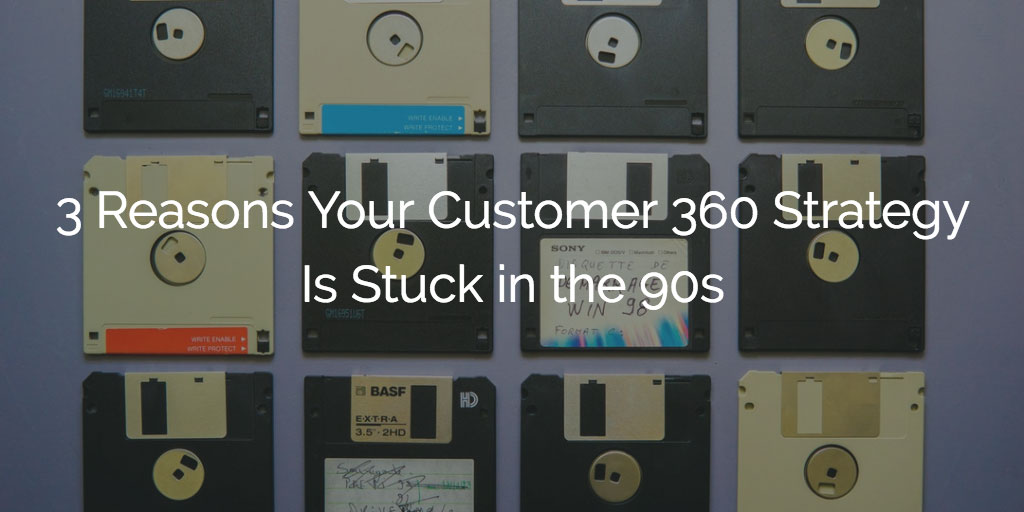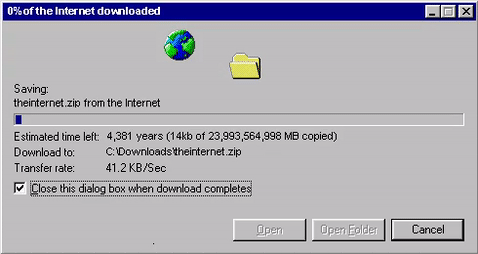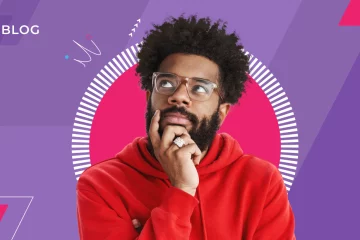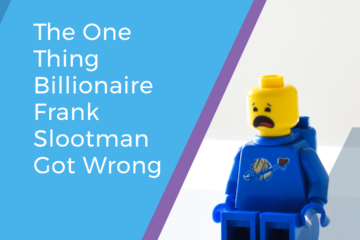3 Reasons Your Customer 360 Strategy Is Stuck in the 90s

Let’s all just agree: the 1990s were awesome. Tamagotchis, Birkenstocks, Vanilla Ice—what more could you ask for?
And even though Birkenstocks and fanny packs are (incredibly) back in fashion, some things are probably better left in our memories. (Bowl cuts, anyone?) Let’s take 90s tech, for example: dial-up modem tones and brightly colored iMacs may give rise to warm feelings of nostalgia, but waiting 30 minutes to download an email? I for one am super glad we moved on from that.

But how much have we really moved on? In some aspects of B2B IT, things haven’t changed a ton in the last 20 years. Plenty of companies are tracking essentially the same data using similar systems funneled to the same teams—and those teams make use of that data the same way they did in 1998.
Like, does anyone outside of Marketing know what content customers are engaging with? Does anyone outside of Product have any clue what daily active use looks like? Could anyone besides Sales even find a customer’s basic contact info?
And even if those pain points have been solved, they probably haven’t been solved evenly across the company.
Around the turn of the century, pioneers like Tom Siebel were talking about the need to bring all customer data together in one view—a “360-degree view of the customer.” In this utopia, every employee in a company would fully understand what’s happening with a client.
Obviously, if we graphed the amount of customer data we’re collecting and analyzing since the 90s, it would look like the letter J. But have we really achieved the mythic 360-degree view?
The Dream of the 90s
Let’s travel back in time to the 90s to understand the original need for a Customer 360.
The macro business trend of the 1980s and 1990s was consolidation. Private equity and debt markets opened up a world of mega-mergers from telecom consolidation to AOL-Time Warner. In this sea of conglomerates, customer experience suffered as employees struggled to get a full picture of what was happening with a client.
So IT departments embarked on consolidation projects—just smash together every disparate system with an acronym for a name: ERP systems, HR products, and CRM implementations.
And the Customer 360 stood like an oasis, just beyond reach across a desert of multi-year IT projects. After all, just because you can route different data sources into one window doesn’t make the information meaningful or even necessarily more accessible!
Where are we now?
Fast forward two decades and where are we? In some sense, we still strive for the elusive Customer 360, with employees hunting and pecking across many systems to understand what’s happening with a client.
At the same time, a senior exec at one of our large Fortune 500 clients recently said, “Our problem isn’t that we don’t have a Customer 360. It’s that we have 48 of them!”
Another client recently asked us, “What use is giving employees data if they don’t know what to do with it?”
A third told us, “Beautiful dashboards become beautiful parking lots.”
What if our premise around a Customer 360 is wrong? Or perhaps just stuck in time?
I think there are three key ways customer data infrastructure is still sporting parachute pants and bucket hats—in other words, stuck in the 90s:
- Data: Customer data is no longer about static, manually entered information (e.g., customer contact information). It’s about real-time, dynamic data sources like product usage and telemetry from IoT sensors.
- Structure: Business changes are no longer one-way. Sure, there are a number of mega-mergers (hello AT&T!), but divestitures, spin-outs, and take-privates are just as much en vogue.
- Pace: The pace of updates has increased radically. New products are launched and revised continuously, and client sponsors change seemingly all the time.
The 21st-Century Customer 360
Instead, the new Customer 360 has dramatically different requirements:
- Personalized: A Customer 360 needs to show me the products and businesses relevant to me, as an individual employee. And it needs to show me the information relevant to the person at the client org with whom I’m speaking—not just at the company level.
- Insightful: And please don’t make me interpret all of this data. Give me a simple red/yellow/green view of how this client is doing.
- Action-oriented: Tell me what I should do next based upon proven best practices.
- Automated: And as much as possible, do those actions for me at scale.
The new Customer 360 is no longer a dashboard or a report. It’s an orchestration system to drive the client experience end-to-end. In other words, it’s far more strategic than a workflow hack or an incremental time-saver.
If you’re a CEO or IT leader and your Customer 360 is stuck in the 90s, it’s time to get really strategic and proactive with your processes and systems. We’re seeing agile companies with 21st-century levels of sophistication in this area turning CX into a massive competitive advantage.
In short, you really don’t want to be caught wearing your Generra Hypercolor t-shirt in 2019 and beyond. It’s time to update your Customer 360 to something a bit more current! (Full disclosure: I still think Hypercolor is cool!)
So if you’re a CEO or CIO, I’m happy to chat more about what a cutting-edge strategy looks like—100% serious. You can reach out to me one-to-one below—I’d love to hear what your Customer 360 obstacles are.



